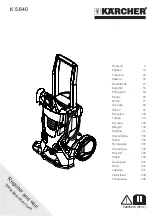
Washing environmentally and economically
19
Energy and water consumption
– Water consumption and energy us-
age are determined by the size of the
load.
To make the most of your machine,
load the maximum dry load for the
programme you are using.
– When smaller amounts of laundry are
washed, the automatic load control
will reduce the amount of water and
energy used.
– Use the
Express 20
programme for
small, lightly soiled loads.
– Modern detergents make it possible
to wash at lower temperatures (e.g.
20 °C
). Washing using lower temper-
ature settings will save energy.
– To maintain the hygiene of the ma-
chine, carry out a hot wash (above
60 °C) at regular intervals. The
in-
dicator will light to remind you to
carry out a hot wash.
Detergent
– Do not exceed the amounts of deter-
gent recommended by the manufac-
turer on the packaging.
– Adjust the dosage to the degree of
soiling of the laundry.
– Reduce the amount of detergent with
smaller loads (approx. ⅓ less than
the amount recommended can be
used when washing a half load).
Choosing the correct extra option
(Short, Soak, Pre-wash)
Select:
– A wash programme together with the
Short extra option
for light to normal
soiling
where there are no obvious
marks.
– A wash programme without any extra
options for normal to heavy soiling
with visible staining.
– A wash programme together with the
Soak
extra option for heavily soiled
laundry.
– The
Pre-wash
extra option for laundry
with large amounts of dirt (e.g. dust,
sand).
When drying with a tumble dryer
Selecting the highest possible spin
speed for the wash programme will
save energy when drying in a tumble
dryer afterwards.
















































